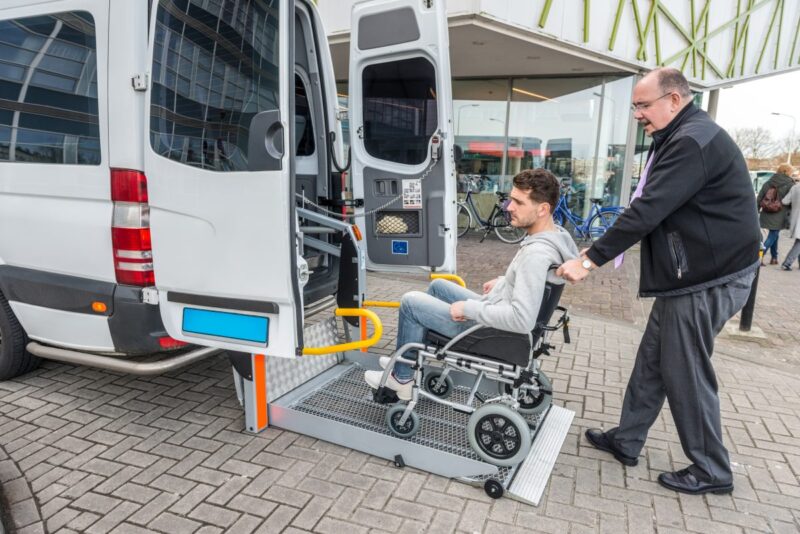Navigating non-emergency transport for hospital visits can be a daunting task, especially for elderly patients. Uncertainty surrounding planning, accessibility, cost, and safety can make an already challenging situation even more stressful. Here we’ll unravel this complicated issue, providing practical insights to facilitate smooth, comfortable, and stress-free transport for seniors to hospital appointments.
Scheduling and Planning
Firstly, good scheduling and planning lie at the heart of successful transport for elderly to hospital. Elderly patients, their families, or their caregivers must start by identifying the frequency of hospital visits. Understanding whether appointments are regular or sporadic helps to effectively strategize transportation and mitigate potential stressors. For recurrent visits like dialysis, chemotherapy, or physiotherapy, having a fixed schedule can simplify coordination with transport services, resulting in more efficient and timely travel.
In addition, consider planning for the day of the appointment. Ensure there is enough time allotted for preparation, travel, and any unexpected delays. This might include accounting for traffic patterns, weather conditions, or possible health fluctuations of the patient. A little extra time can prevent a rush, which might contribute to anxiety and discomfort.
It is wise to keep a detailed itinerary, which might include appointment times, pick-up and drop-off locations, and contact information of the healthcare providers and transport services. This schedule can serve as a helpful reference, not only for the patient but also for family members or caregivers. It is especially useful in cases where cognitive decline may be a factor.
Choosing the Appropriate Mode of Transportation

Different circumstances call for varied modes of transportation. For some seniors, driving themselves or being driven by family or friends might be most suitable. Yet, it’s important to assess the individual’s physical and mental capabilities to drive or travel comfortably in a personal vehicle. If personal transport is challenging, other alternatives exist, such as taxis, rideshares, or community-based volunteer programs.
For patients with mobility issues or certain medical needs, specialized non-emergency medical transport (NEMT) services might be the most appropriate choice. These services provide trained drivers and specially equipped vehicles to cater to the unique needs of the patient, including wheelchair accessibility or oxygen support. Be sure to research and choose a reputable NEMT service with positive reviews and recommendations.
Finally, for those living in urban areas, public transportation may be an accessible and cost-effective option. However, factors such as the patient’s comfort with navigating public transit, distance to stops, and the physical exertion required should be evaluated before choosing this mode.
Coordination with Healthcare Providers
Involving healthcare providers in the transport discussion can add valuable insight. After all, they are familiar with the patient’s medical conditions and can provide appropriate advice regarding travel considerations. Discuss with them about any special preparations needed for the travel, based on the patient’s health status.
Next, make sure to inform the healthcare providers about the appointment timings and the mode of transportation chosen. This helps them be prepared to provide any necessary assistance at their end. For example, if the patient requires a wheelchair, the healthcare facility can have one ready upon arrival.
Understand that coordination is not just about the current visit. Keep the healthcare providers updated about any changes in the patient’s condition or challenges faced during travel. This allows them to adjust future treatment plans accordingly and work with the family or caregivers to ensure a more comfortable journey next time.
Accessibility and Mobility Considerations

Accessibility and mobility are two crucial factors in non-emergency transport for elderly patients. Ensure that the chosen mode of transport is accessible, comfortable, and safe for the patient. If the patient uses a wheelchair, walker, or cane, the transport option needs to accommodate these aids.
Consider the accessibility at the hospital or clinic. Check if they have wheelchair ramps, handrails, elevators, and other necessary facilities. If possible, make prior arrangements with the healthcare facility for any special assistance needed.
Always plan for any unpredictability in the patient’s mobility. Elderly patients can have good and bad days, and it’s essential to be prepared to handle any sudden changes in their mobility. Keep necessary aids or medications handy and have a plan in place for managing potential challenges.
Accommodations for Special Needs
Elderly patients often have special needs that must be accommodated during non-emergency transport. For those with cognitive impairments, such as dementia or Alzheimer’s, it may be beneficial to have a familiar companion accompany them. It can provide comfort and help ensure that they do not become disoriented or anxious.
Additionally, those with sensory impairments, like poor vision or hearing loss, may need extra support. For instance, travel routes should be well-lit, and noise levels should be kept to a minimum to prevent overstimulation. Special instructions can be provided to the transport service to cater to these needs.
Patients with certain health conditions may require special medical equipment or care during travel. It’s essential to communicate these needs to the transport service provider and ensure they can meet these requirements.
Safety Precautions during Transport

Safety is paramount when transporting elderly patients. The vehicle should be in excellent condition, equipped with essential safety features like seat belts and airbags. Also, if the patient has mobility issues, the transport should include necessary provisions such as wheelchair locks and lifts.
Also, consider the hygiene and cleanliness of the vehicle, especially in the current context of global health concerns. The transport provider should adhere to strict cleaning protocols to prevent the potential spread of infections.
Furthermore, if the journey is long, plan for regular breaks to avoid fatigue, which can compromise safety. During these breaks, ensure the patient is comfortable, hydrated, and has access to restroom facilities if needed.
Tips for Comfortable and Stress-Free Journeys
Elderly patients often experience anxiety and discomfort during travel, but with some thoughtful planning, these can be significantly reduced. Familiar objects, such as a favorite blanket or cushion, can provide comfort and a sense of familiarity. If the patient enjoys music, consider creating a soothing playlist for the journey.
Communication is also key to comfort. Keep the patient informed about the journey’s progress to help them feel more in control and less anxious. Also, try to maintain a calm and positive environment, as emotional states can often influence physical comfort.
Encourage the patient to voice their needs and discomforts openly. This allows for timely adjustments and improvements, ensuring a more enjoyable journey.
Wrapping Up

While non-emergency transport can be complex, with comprehensive planning, choosing appropriate transport, coordinating with healthcare providers, and considering accessibility, special needs, safety, comfort, and cost, the journey can become significantly less stressful. Let’s make each trip a journey of care and comfort for our beloved elderly patients.

